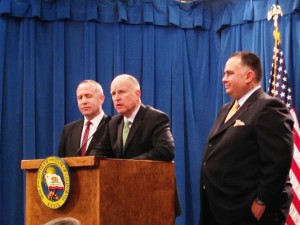Gov. Jerry Brown has made paying off California’s $27 billion “wall of debt” a top priority. But one of the largest creditors that the state owes money to is actually itself.

A report released last week by the Department of Finance shows 132 loans taken out from special government funds over the past decade add up to a $4.6 billion debt.
The tab is the cumulative result of a politically advantageous maneuver governors and legislative leaders from both parties have practiced for years. The idea is to take extra money from, say, the Gambling Control Fund, use it to pay for broader government spending, and then repay that money at some point down the line.
The political cost is relatively low, since the budget typically only borrows money from funds with extra cash. As Governor Brown’s finance director, Ana Matosantos, explained, “the dollars that are borrowed are based on what funds have reserves in them, and have dollars available after maintaining the level of program that the Legislature has authorized.” But the totals add up. The Department of Finance’s latest report shows the state owes $671 million to nine different transportation-focused funds; $611 million to the Unemployment Compensation Disability Fund; and $500 million to the Air Resources Board for money borrowed from California’s cap-and-trade auction revenue earlier this year.
(The cap-and-trade loan infuriated environmental groups, since the auction revenue is supposed to fund clean energy efforts. Brown said the delay will lead to more efficient spending when the money is eventually allocated.)